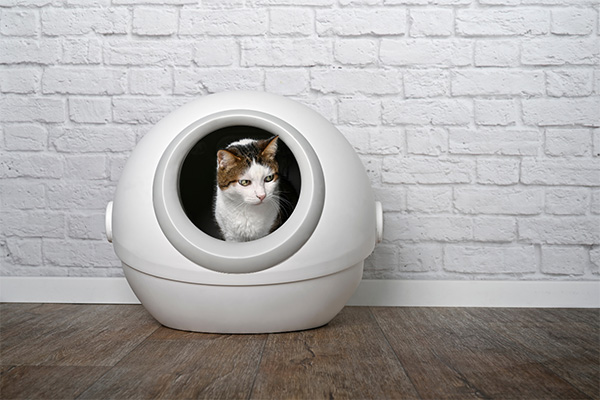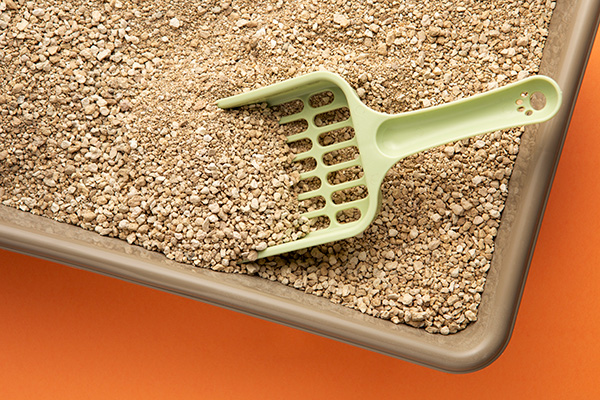The process of adding cat litter to a litter box is an essential yet often overlooked aspect of feline care. This routine task goes beyond mere cleanliness; it involves selecting the right type of litter that suits both the cat's preferences and the owner's lifestyle. Factors such as absorbency, odor control, and environmental impact play a key role in this choice.
In this post, we will share how much cat litter to add to your cat's litter box. This seemingly simple act is a blend of practicality and responsibility, an everyday task that underscores the evolving dynamics of pet care in contemporary lifestyles.
How Much Litter To Use in A Traditional Scooping Litter Box
The amount of cat litter to put in a litter box typically depends on the type of litter you are using and the size of the litter box, but a general guideline is to maintain a depth of about 2 to 3 inches. This depth is sufficient to allow your cat to dig and cover their waste comfortably, which is a natural behavior for cats. If the litter is running low, add more litter; if there is too much litter, be sure to scoop some out.
Maintaining a depth of 2 to 3 inches is optimal for clumping litter, facilitating the formation of solid clumps that can be effortlessly scooped out. For non-clumping litters, you might need to change the litter more frequently, so a depth of 2 to 3 inches is also suitable to minimize waste.
It's important to monitor the litter level regularly. Not enough litter may not effectively absorb odors and liquids, while too much litter can be wasteful and might spill out of the box. When utilizing an automatic cat litter box, it is important to note that adding too much cat litter may malfunction the box's operation. Additionally, some cats have preferences for the depth of litter, so you may need to adjust based on your cat's behavior. Regular cleaning and maintaining the appropriate amount of litter are key to keeping your cat's litter box environment clean and odor-free.

How Much Litter To Use In An Automatic Cat Litter Box
When it comes to filling an automatic cat litter box, it's essential to adhere to specific guidelines to ensure its proper function and your cat's comfort. The most crucial step is to consult the user manual or manufacturer's instructions for your automatic litter box, as different models may have varying requirements for the amount and type of litter. Generally, a litter depth of about 2 to 3 inches, similar to traditional litter boxes, is recommended. This depth allows the box's cleaning mechanisms, such as raking or sifting, to operate effectively without becoming jammed. Refrain from adding excessive litter, as it may lead to malfunctioning the litter box.
The type of litter you use is also significant, with many automatic boxes designed to work best with clumping litter. Clumping litter is preferred because it's easier for the automatic mechanisms to separate waste. Some models might also be compatible with crystal litter, but verifying this with the manufacturer is important. Observe how the litter and cleaning mechanisms interact after setting up your litter box. If there are any issues, like the mechanism getting stuck or litter being thrown out of the box, you may need to adjust the litter level accordingly.
Regular maintenance is vital, even with an automatic litter box. This includes topping up the litter to maintain the recommended level, completely changing the litter as suggested by the manufacturer, and cleaning the box itself periodically. By following these guidelines and maintaining your automatic litter box, you can ensure a hygienic and comfortable environment for your cat, with the added convenience of automated cleaning for you as a pet owner.
Factors To Consider
Type of Litter
Clumping Litter: Constructed mainly from bentonite clay, clumping litter creates tight clumps upon contact with moisture, simplifying the process of scooping out urine and feces. Its popularity stems from its cleaning convenience and effective odor control.
Non-Clumping Litter: Typically made from clay, wood, paper, or other absorbent materials, non-clumping litter absorbs urine but does not form clumps. It's often less expensive than clumping litter but requires more frequent changing of the entire litter box.
Silica Gel Litter: Crafted from silica beads, this type of litter boasts high absorbency and efficient odor control. While it tends to outlast traditional clay litters, it is typically associated with a higher cost.
Natural Litters: Derived from recycled paper, wood, corn, or other plant-based materials, these litters are environmentally friendly and frequently biodegradable. They come in both clumping and non-clumping varieties and are a good option for cats or humans with allergies to clay dust.
Litter Box Size
The dimensions of the litter box should provide ample space for your cat to turn around, dig, and cover their waste comfortably without feeling confined. As a rule of thumb, opt for a box that is at least one and a half times the length of your cat (excluding the tail). If the litter box is too small, unwanted cat flings litter outside the litter box can be common as cats like to dig.
Consider getting an extra-large box or multiple boxes for larger or multiple cats. If you do not supply enough litter boxes in a multi-cat household, it can lead to unwanted accidents.

Image by Freepik
Number of Cats
In households with multiple cats, it is advisable to have one litter box per cat, along with an additional one. Having multiple litter boxes can help prevent territorial issues and keep the boxes cleaner, as cats are less likely to use a dirty box.
Cleaning Frequency
Maintaining a litter box clean involves regular scooping, litter replacement, and consistent additions of fresh litter. For clumping litter, daily scooping is ideal for removing waste and upholding cleanliness promptly. The entire box should be emptied, cleaned every few weeks, and replaced with fresh litter. For non-clumping litter, you may need to change the entire box more frequently, approximately once a week, depending on usage.
Cat Preferences
Cats can have strong preferences regarding litter texture, scent, and dust levels. Some prefer finer-grain litter that more closely mimics sand, while others might prefer larger granules that are less likely to stick to their paws. Many pet owners prefer dust-free cat litter, especially those who are prone to allergies. Additionally, many cats dislike strongly-scented litter. Observing your cat's reaction to different types can help you find their preference.
Health Monitoring
Frequently cleaning and attentively observing the litter box can offer valuable insights into your cat's health. Changes in the frequency of urination, size of urine clumps, consistency of feces, or presence of blood can be early indicators of health issues such as urinary tract infections, kidney problems, or digestive issues.
